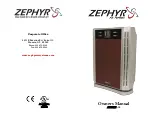
IntesisBox
®
PA-AC-ENO-1i / 1iC
User’s Manual r1 eng
© Intesis Software S.L. - All rights reserved
This information is subject to change without notice
IntesisBox
®
is a registered trademark of Intesis Software SL
URL
Email
tel
http://www.intesis.com
[email protected]
+34 938047134
10 / 43
3.2 Connection of binary inputs
Follow the scheme below in order to connect the binary inputs of the K2 connector (check
Figure 4.1).
Figure 3.3
Connection of binary inputs
3.3 Placement
The IntesisBox
®
interface antenna has a better sensibility when the device is placed
vertically, and therefore this is the preferred position when placed (antenna zone should be
located in the bottom side, floor side, once the device is fixed to the wall).
The coverage distance (see Table 3.1) of the signal emitted by the IntesisBox
®
, or by any
other EnOcean device, is determined by the room geometry and where they are placed. As
an example, long narrow corridors with wide walls are an adverse situation. People or other
obstacles can reduce the coverage distance too. Therefore, is advised to always think in the
worst possible scenario to decide the placement of the device to ensure a good stability in
the radio system.
Coverage
distance
Conditions
< 30 m
Under ideal conditions: broad room, no obstacles, good antenna design and
good antenna positions.
< 20 m
The room is filled with furniture and people and penetration through up to 5
dry walls or up to 2 brick walls or up to 2 aero concrete walls.
< 10 m
Identical to the previous case but the receiver is placed to a room corner or
range along a narrow floor.
< 1 m
Metal-reinforced ceilings at upright penetration angle (in strong dependence of
reinforcement density and antenna positions).
Table 3.1
Device coverage distance











































